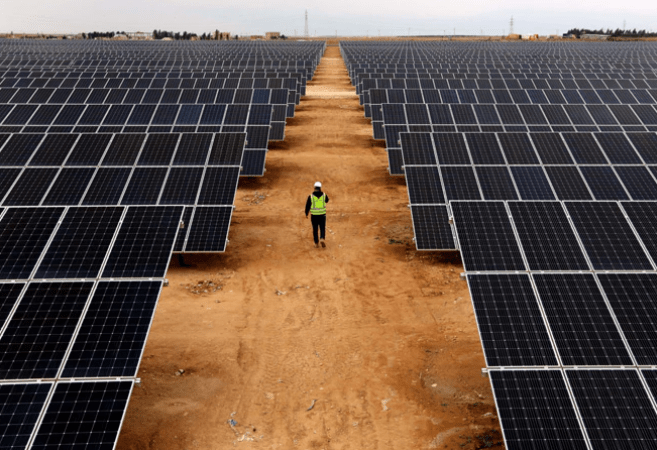India’s target of 450 Gigawatt (GW) of solar power by 2030 is a realistic target as the sector had a 5-year compounded annual growth rate (CAGR) of 22 percent until now and in the next two years likely to have about 27 per cent growth”
India’s vibrant renewable energy sector requires more dynamic policy interventions, cheap credit, strengthening of transmission and distribution sector (T&D) and investments in solar equipment manufacturing to sustain the growth achieved in the past decade, said industry leaders.
Dependence on equipment imports, transmission connectivity and land acquisition issues, payment delays from debt-ridden discoms, aggressive tariff caps leading to cancellation of auctions, tariff re-negotiations and some states re-opening power purchase agreements, inadequate investments in transmission and grid infrastructure and policy uncertainties are some of the major challenges the solar industry is going through, said Praveer Sinha, managing director and CEO of Tata Power at the ET Energyworld webinar organised today.
He said structuring auctions like hybrid tenders that ensure 24X7 reliable supply of power, developing system flexibility, incentives for domestic solar equipment, ironing out operational inefficiencies in T&D network, earmarking unused government land and non-arable land for solar development and encouraging discoms to buy solar power to create more demand are some of the incentives required for the sector.
“India’s target of 450 Gigawatt (GW) of solar power by 2030 is a realistic target as the sector had a 5-year compounded annual growth rate (CAGR) of 22 percent until now and in the next two years likely to have about 27 per cent growth.” Considering that, from 175 GW by 2022 to reach 450 MW, the CAGR required is only 13 per cent and already the country has set up 90 GW and another 40 GW is under construction, he added.
Sumant Sinha, Chairman and Managing Director of ReNew Power said diversified hybrid grid solutions with flexibility and innovations in grid management and cheap storage solutions like tendering storage capacities and incentivising domestic manufacturers are required to sustain growth. “Of the 27GW added in the last two years, 60 per cent were renewables. Our energy system is going through a transition and we need to address the challenges,” he said.
Tulsi Tanti, Chairman and Managing Director of Suzlon Group said India has created substantial capacities in wind, with about 45 units capable of making 10,000 MW of wind machinery and associated with 4000 MSMEs, with component, validation and testing ecosystems. In the last five years, the country exported 10GW of wind machinery, he said.
Saibaba Vutukuri, CEO of Vikram Solar said India is now investing an average Rs 60,000 crore a year in solar wind farms to create about 15 GW a year, but is dependent on imports for 85-90 per cent of the equipment. One GW of complete solar equipment manufacturing unit requires only an investment of Rs 2,200 crore, which means if the country invests half of the investments going into solar farms a year, it can create 20 GW of solar equipment capacity, which will be enough for the next 30-40 years to tap into India’s 1000 GW of solar potential.
Source: Business Today



